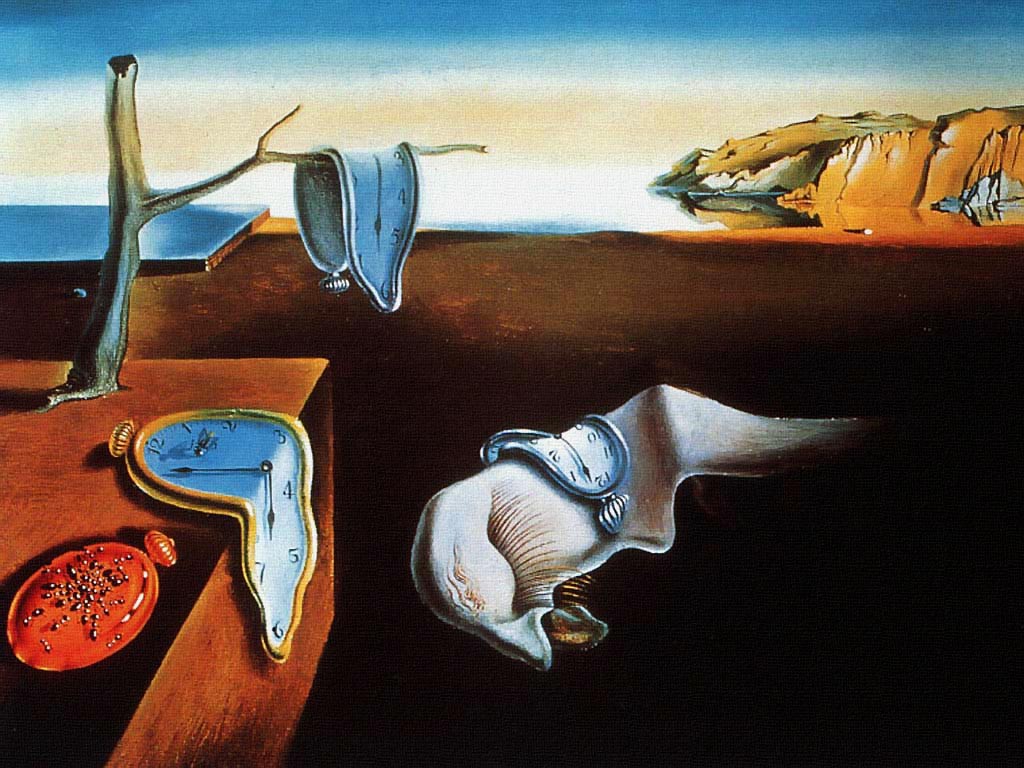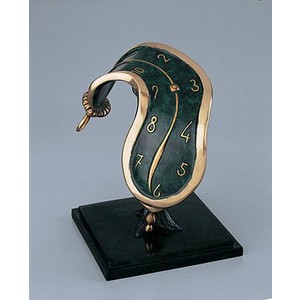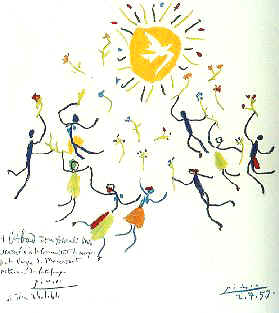Time melting
 Sunday, November 27, 2011 at 12:17PM
Sunday, November 27, 2011 at 12:17PM In 1931, Salvado Dalí introduced the image of soft, melting pocket watches in one of his most famous works, “The Persistence of Memory”.

Suggesting that time was not as rigid and fixed as many people believed, the watches also suggested Einstein’s theory that time is relative. The image of the melting watch was portrayed by Dalí throughout his lifetime.

In Dalí’s sculpture “Dance of Time II” seen above, Time appears to be fluid as it moves and dances in rhythm with the beat of the universe.
Influenced by their perception of time, humans have always attempted to dance with Time in various ways and to different beats. And Time is a versatile dancer.
When there was no experience of self separate from the environment, magic Time danced in pointed shoes through point-like moments. Its flying leaps from moment to moment were magical, taking all and sundry along.
The repetitive dance steps accompanying the chorus of mythic, cyclical Time formed an ongoing round as Time danced in circles. Its seasonal music was comforting and offered hope.
With the coming of the Age of Reason, time was seen to be linear, consisting of past, present and future. This necessitated the learning of new steps in the dance with mental Time, all in the name of progress. Time marched on, beating out its rhythm.
Postmodernism allowed all movement to be dance, and so Time improvised, focusing on the individual it was partnering with.
In dreams, Time leads in a tango-like dance. Time's embrace of the dreamer alternates between the open and the closed as scenes change rapidly from one to another and characters morph into each other.
Technology has made possible no time and all time in a huge web. In an age of information and an age of communion, individuals connect with each other regardless of time zones.

“Sardana” by Picasso
Reminiscent of the Sardana, a dance which symbolises a spirit of brotherhood and harmony, the dance with Time is one of interconnectedness, acknowledging self and the other in a unique fashion. Perhaps on the threshold of entering another dimension, we more and more begin to be reminded of pure grace and fluidity of movement. Time is no longer Chronos. It is dancing as Kairos, known to those individuals who have experienced being in a state of flow.
In this state, an individual's subjective experience of time is certainly altered. Time seems to disappear as it were, hiding its face for as long as the experience lasts.
No noticing of thoughts, emotions or feelings. No concept even of self for as long as the experience lasts. Present and in the moment. No thing in which all things rise. An emptiness giving rise to all forms. Experiential oneness with it all.
Mindful, present and in the moment, and most definitely aided by technology in a significant way, together we are now able to begin to enter a dance of shared flow which allows, welcomes and integrates all the various dance steps.
Jean Gebser, spoke of timelessness and time-freedom.
Jeremy Johnson, @jdj_tweets, in his excellent piece “The Integral Philosopher: Jean Gebser and Time” writes,
“Integral is not abstraction. It is not a new system of ideas that everyone can agree on. It is a direct experience of “Presence.” Not an eternal now, but a consciousness that supports all the multitudes of experience, all the different ways we can perceive time.”
In this dance of Presence, all movements rise and fall. At its heart is stillness.
“Except for the point, the still point, there would be no dance, and there is only the dance." - TS Eliot
Do we see the rhythmless and rhythmful stillness? Do we hear, smell, taste and feel the beat? Do we intuit the dance?
Reader Comments (1)
nice to see your post very nice post
email a fax